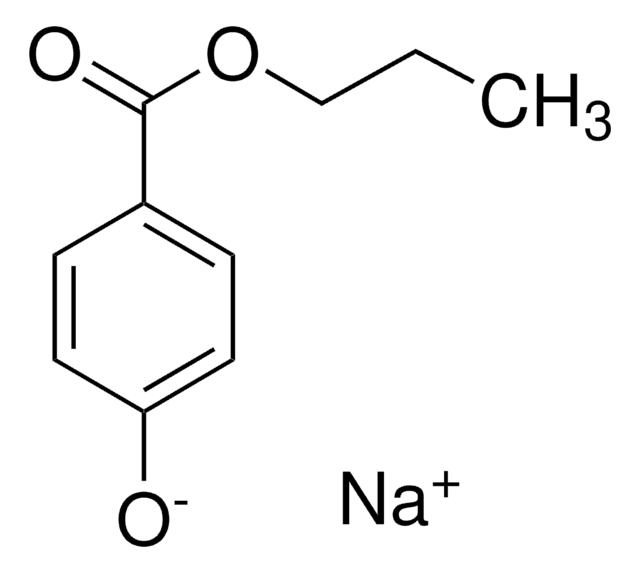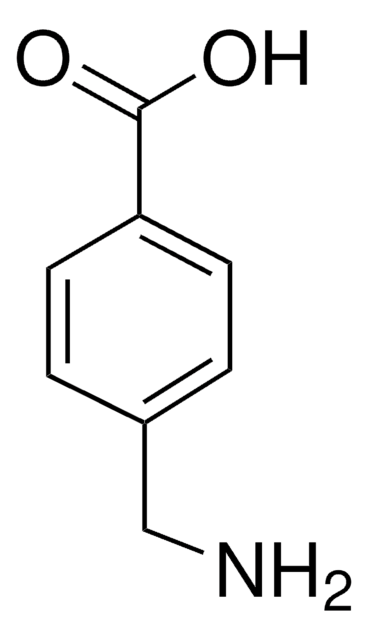W295101
Propyl 4-hydroxybenzoate
≥99%
Synonyme(s) :
4-Hydroxybenzoic acid propyl ester, Propyl paraben
About This Item
Produits recommandés
Source biologique
synthetic
Qualité
Fragrance grade
Agence
follows IFRA guidelines
Conformité réglementaire
EU Regulation 1223/2009
Pureté
≥99%
Pf
95-98 °C (lit.)
Application(s)
flavors and fragrances
Documentation
see Safety & Documentation for available documents
Allergène alimentaire
no known allergens
Propriétés organoleptiques
burnt; smoky
Chaîne SMILES
CCCOC(=O)c1ccc(O)cc1
InChI
1S/C10H12O3/c1-2-7-13-10(12)8-3-5-9(11)6-4-8/h3-6,11H,2,7H2,1H3
Clé InChI
QELSKZZBTMNZEB-UHFFFAOYSA-N
Vous recherchez des produits similaires ? Visite Guide de comparaison des produits
Description générale
Certificats d'analyse (COA)
Recherchez un Certificats d'analyse (COA) en saisissant le numéro de lot du produit. Les numéros de lot figurent sur l'étiquette du produit après les mots "Lot" ou "Batch".
Déjà en possession de ce produit ?
Retrouvez la documentation relative aux produits que vous avez récemment achetés dans la Bibliothèque de documents.
Les clients ont également consulté
Notre équipe de scientifiques dispose d'une expérience dans tous les secteurs de la recherche, notamment en sciences de la vie, science des matériaux, synthèse chimique, chromatographie, analyse et dans de nombreux autres domaines..
Contacter notre Service technique



